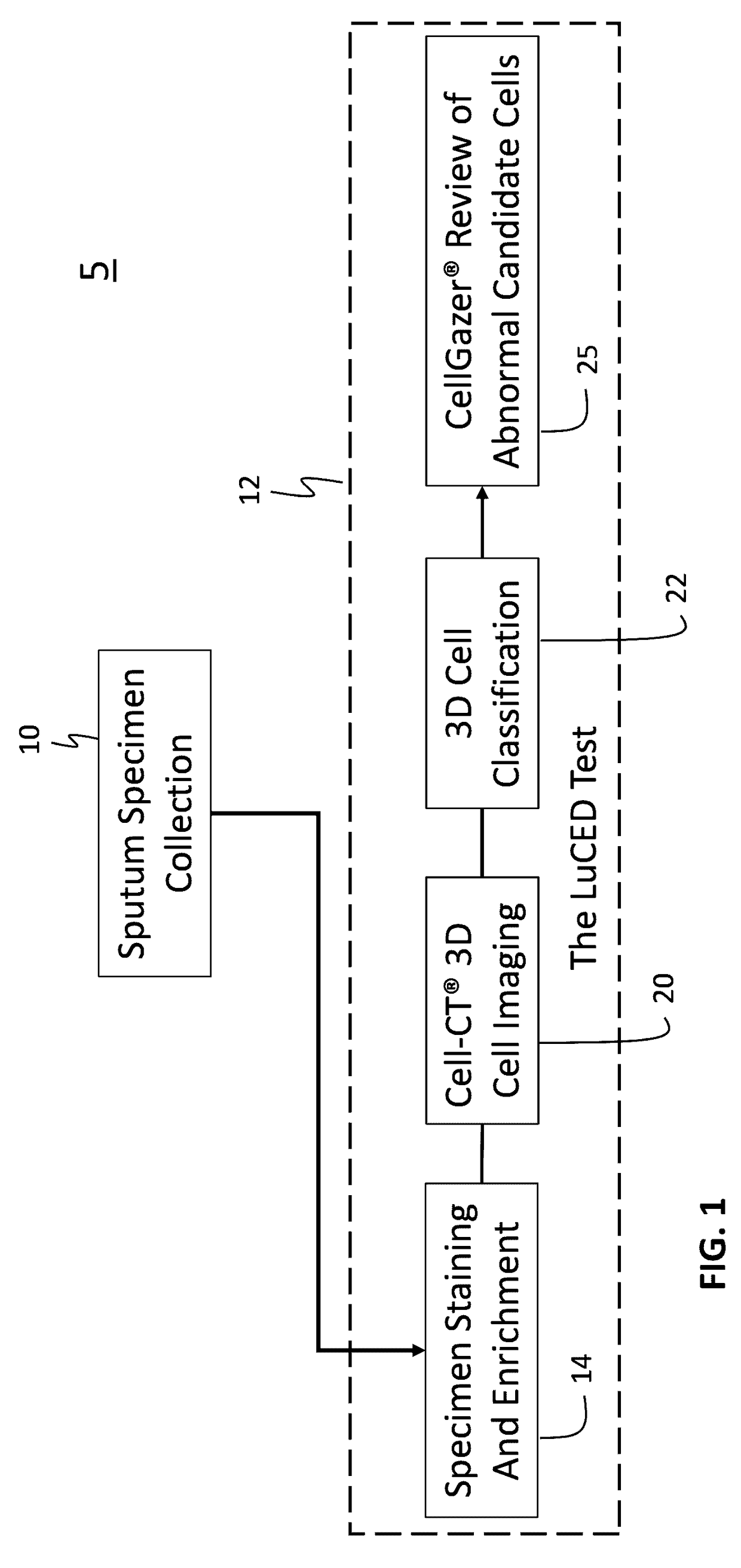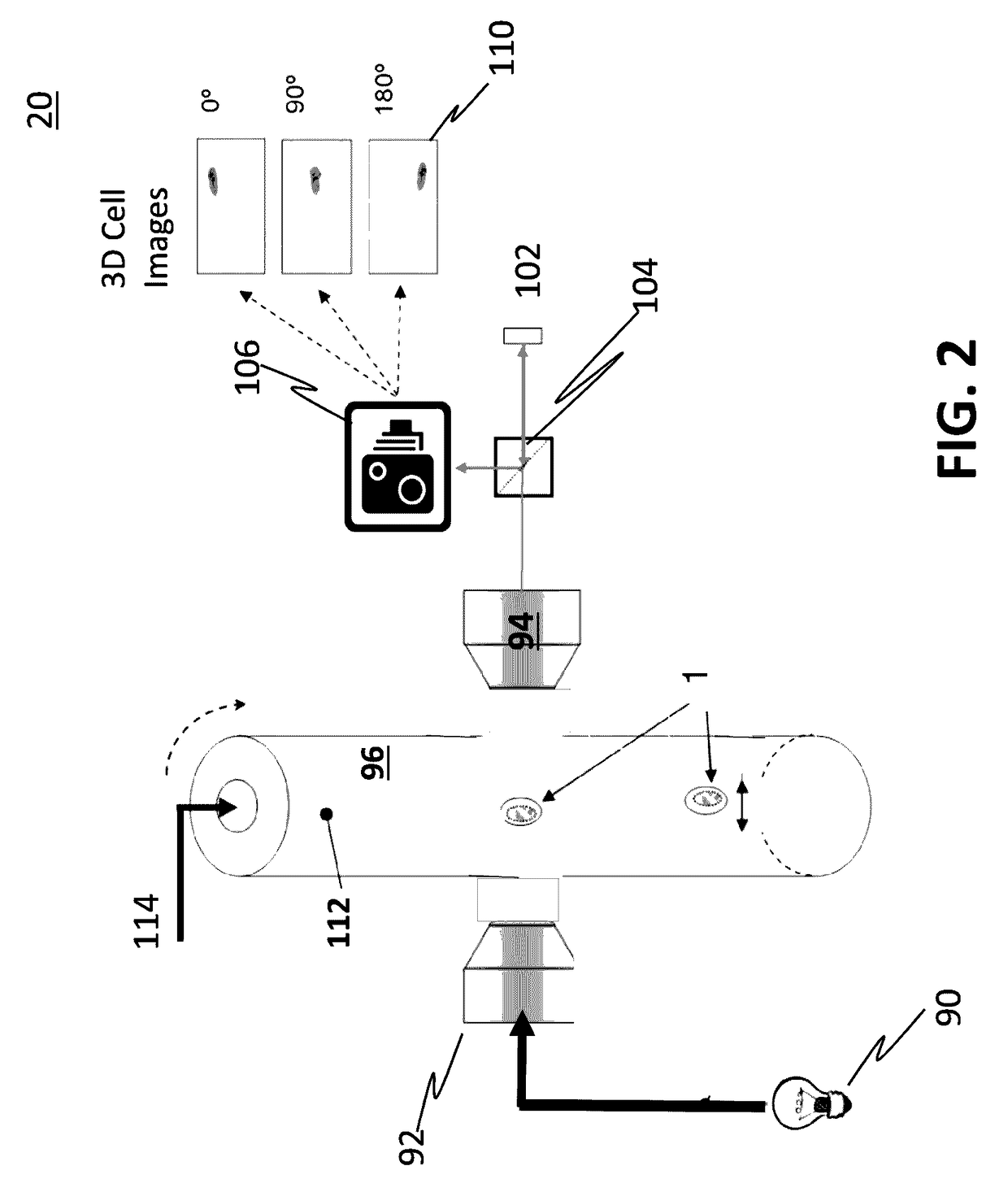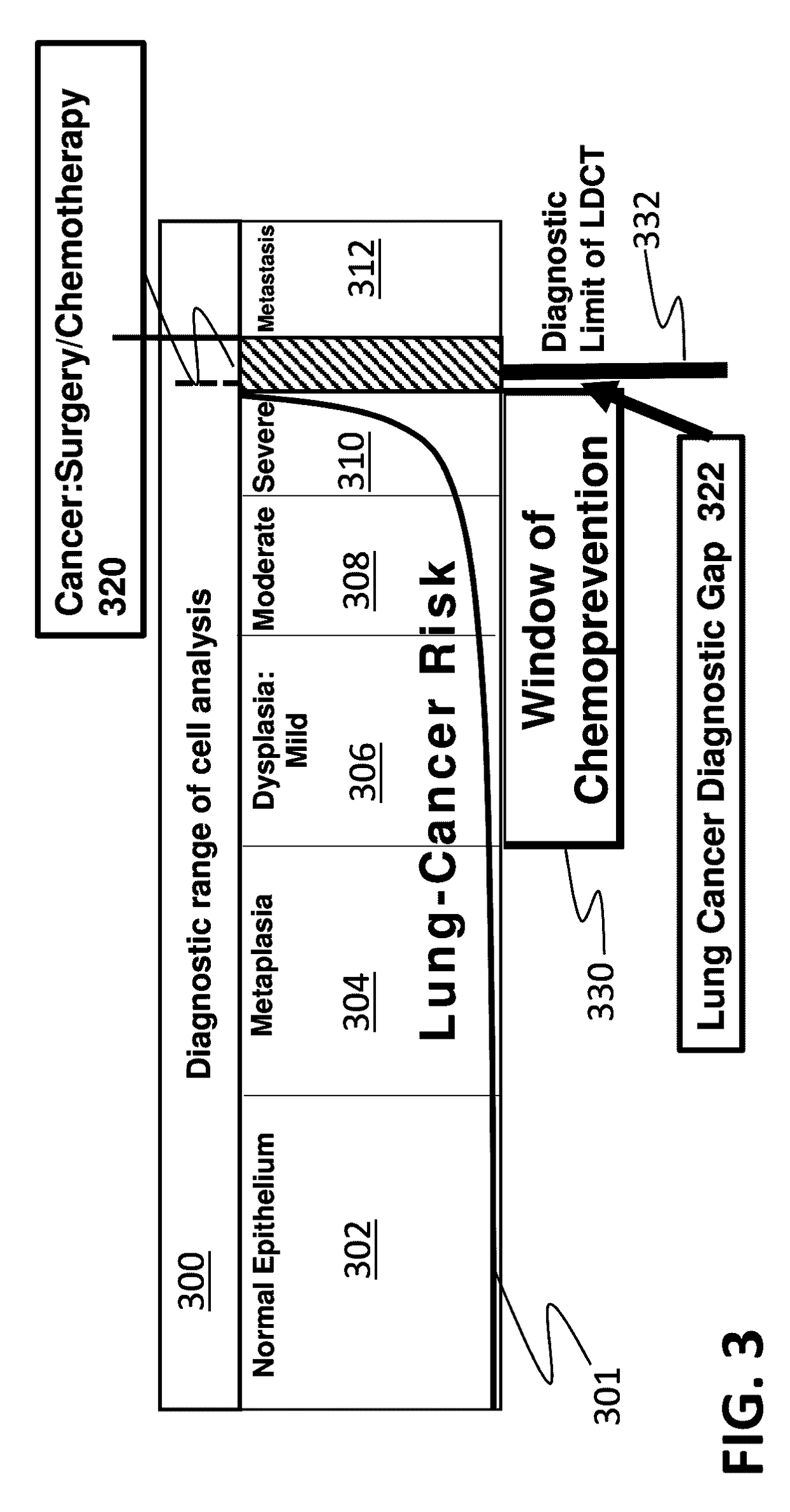System and method for automated detection and monitoring of dysplasia and administration of immunotherapy and chemotherapy
- Summary
- Abstract
- Description
- Claims
- Application Information
AI Technical Summary
Benefits of technology
Problems solved by technology
Method used
Image
Examples
Embodiment Construction
[0027]The following disclosure describes a method of treating a malignancy in a human subject by analyzing 3D images of cells obtained from a sputum specimen followed by treatment with immunotherapy when indicated. Several features of methods and systems in accordance with example embodiments are set forth and described in the figures. It will be appreciated that methods and systems in accordance with other example embodiments can include additional procedures or features different than those shown in the figures. Example embodiments are described herein with respect to an optical tomography cell imaging system. However, it will be understood that these examples are for the purpose of illustrating the principles, and that the invention is not so limited.
[0028]The present invention provides an early lung dysplasia and cancer detection system using specimens including patient sputum which is processed by an optical tomography system that produces isometric, sub-micron resolution 3D ce...
PUM
| Property | Measurement | Unit |
|---|---|---|
| Time | aaaaa | aaaaa |
| Time | aaaaa | aaaaa |
| Time | aaaaa | aaaaa |
Abstract
Description
Claims
Application Information
 Login to View More
Login to View More - R&D
- Intellectual Property
- Life Sciences
- Materials
- Tech Scout
- Unparalleled Data Quality
- Higher Quality Content
- 60% Fewer Hallucinations
Browse by: Latest US Patents, China's latest patents, Technical Efficacy Thesaurus, Application Domain, Technology Topic, Popular Technical Reports.
© 2025 PatSnap. All rights reserved.Legal|Privacy policy|Modern Slavery Act Transparency Statement|Sitemap|About US| Contact US: help@patsnap.com



